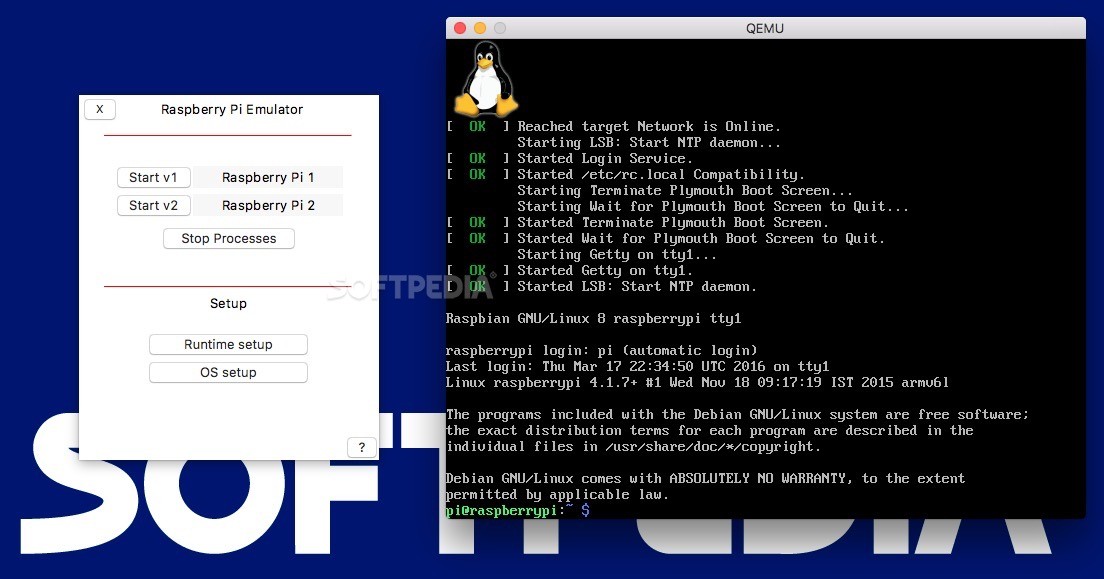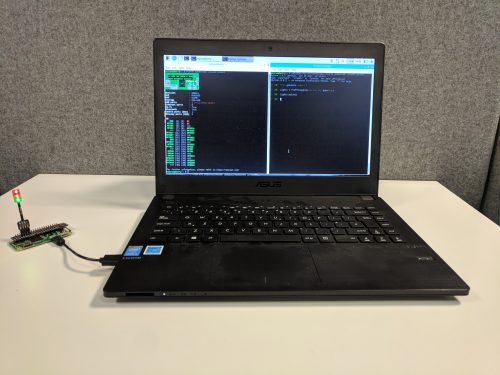
QEMU support for the Pi is still in development, so our approach to getting it to work here is just a clever hack that will by no means be optimal or efficient in terms of CPU utilization. I say more or less because we will still need to use a customized Raspbian kernel in order to boot on the emulated hardware. We will use ARM1176 support on QEMU, which will allow us to more or less emulate a Raspberry Pi 1. In this case, we're going to be using QEMU 4.2.0, which supports an ARM11 instruction set that's compatible with the Broadcom BCM2835 (ARM1176JZFS) chip found on the Raspberry Pi 1 and Zero. It supports a number of different processors, but we're only interested in something that can run Raspberry Pi images natively without a lot of difficulties. Model name : ARMv6-compatible processor rev 7 (v6l)įeatures : half thumb fastmult vfp edsp java tls Some modifications to the kernel are necessary in order for it to work properly with Raspbian, but for our purposes, it's one of the more stable open source solutions available.
#Use raspberry pi emulator mac software#
While technically not identical, the emulation software we will be using, QEMU, provides an ARM-Versatile architecture that's roughly compatible with what is found on a Raspberry Pi 1. While we may encounter some limitations, this build will emulate a cluster of Raspberry Pi 1s that's logically equivalent to a simple, multi-node physical cluster. If we can build many, we can network them all together. If we can build one Raspberry Pi with Docker, we can build many. And three, it takes up no physical space.

Two, it enables Docker to do for the Pi what Docker does best for everything else: it makes software portable, easy to manage, and easy to replicate. One, it turns into software that which would otherwise be a hardware-only device that nobody has to remember to carry around (I'm always losing the peripheral cables). Other than learning from the experience, Dockerizing an emulated Raspberry Pi enables us to do three things. While commercial solutions exist, we will be building our own emulated cluster using a fully open source stack hosted on Google Compute Engine. Since the Raspberry Pi uses an ARM processor, this can make development problematic for those of us who work exclusively in the cloud. While the main value of these clusters comes from their size and low cost, their popularity makes them an increasingly common development platform. Innovation with the Raspberry Pi continues as they are turned into wi-fi extenders, security cameras, even bigger clusters, and more. And on the extreme end of the spectrum, Oracle built a 1060 node Raspberry Pi Cluster, which they introduced at Oracle OpenWorld 2019. Balena, built " The Beast", a 120 node Raspberry Pi cluster, for scaled testing of their online platform.

David Guill built a 40-node Raspberry Pi Cluster that was intended to be part of his MSCE thesis. Interns at DataStax built a multi-datacenter, 32 nodes Cassenda fault-tolerance demo, complete with a big red button to simulate the failure of an entire datacenter. Not long after the first Raspberry Pi was released in 2012, several set out to build them into low-cost clusters, often for research and testing purposes. It's even used administratively in production environments. The Raspberry Pi is no longer just a low-cost platform for students to learn computing, it's now a legitimate research and development platform that's used for IoT, networking, distributed systems, and software development.


This guide discusses everything needed to build a simple, scalable, and fully binary compatible Raspberry Pi cluster using QEMU, Docker, Docker Compose, and Ansible.


 0 kommentar(er)
0 kommentar(er)
